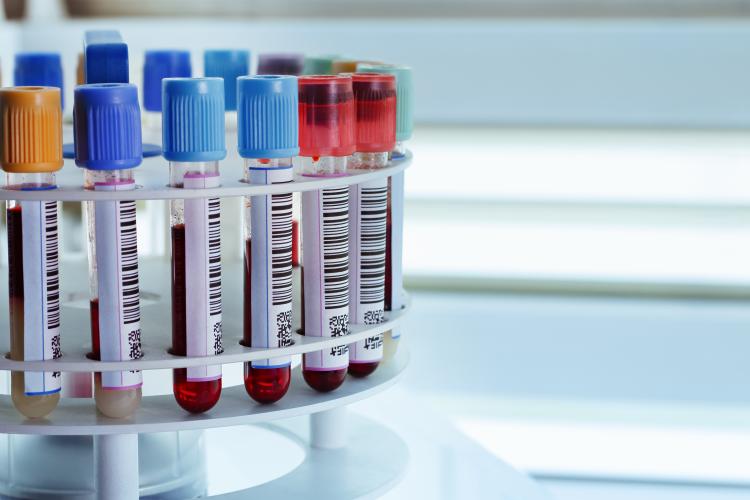Could a simple blood test replace biopsies for cancer patients? IMI’s CANCER-ID project hopes so.

Invasive, costly and risky
Today, many cancer patients have to undergo biopsy surgery to provide doctors with the cell samples they need to diagnose the disease, determine the treatment needed, and then monitor how well a treatment is working. Needless to say, doctors cannot carry out biopsies too often because they are invasive, costly, and risky to the patient. Yet cancer is a dynamic disease and patients would benefit immensely from more regular analyses of their condition.
Cancerous tumours shed cells and fragments of DNA into the bloodstream, and IMI’s CANCER-ID project was set up to see if these ‘circulating tumour cells’ (CTCs) and DNA could be detected and analysed in blood samples – a so-called ‘liquid biopsy’. The project picked two cancers as case studies: lung cancer (where biopsies are particularly hard to obtain on a regular basis) and breast cancer (where there is an urgent need for tests that detect early on when a tumour has become resistant to certain medicines).
The project has developed and validated a range of methods and protocols to extract these cells and fragments of genetic material from blood samples and then analyse them. This is no mean feat. The levels of tumour cells and DNA in the blood are low. The levels of rare genetic mutations in the circulating tumour DNA are even lower, and detecting them requires a special, faster centrifuge that is not available in all clinical labs. In addition, even small changes in the way a blood sample is handled can affect the results. The CANCER-ID team validated its methods and protocols by testing them in different laboratories.
'CANCER-ID helped a lot to raise awareness of the necessity to clearly define the intended context of use for each and every liquid biopsy assay'
According to project coordinator Dr Thomas Schlange of the Precision Medicine Markers team at Bayer, the results revealed that the protocols need to be adapted to different clinical settings – there is no ‘one size fits all’ solution. ‘CANCER-ID helped a lot to raise awareness of the necessity to clearly define the intended context of use for each and every liquid biopsy assay in order to be able to deliver meaningful results,’ he says.
Asked how CANCER-ID has changed the way he works, Dr Schlange responds: ‘We became aware how crucial a clear-cut definition of pre-analytical variables is for the conception and execution of our liquid biopsy studies. This will impact the choice of assays and the way we plan studies in the future.’
A door-opener
The project has also forged lasting links between different stakeholders. ‘The public-private nature of IMI programmes is a door-opener for bringing different stakeholders like companies, academics, clinicians, regulators, patients and payers to the table,’ says Dr Schlange. ‘In CANCER-ID, this helped to deepen the mutual understanding of the requirements for clinical implementation of liquid biopsy assays.’
Managing a large consortium is not without challenges. ‘The biggest challenge was to coordinate the activities of such a large consortium, which became possible through the establishment of focused working groups,’ says the project’s academic lead, Klaus Pantel of the Medical Center Hamburg-Eppendorf (UKE) in Germany. ‘The biggest advantage of taking part in such a productive private-public partnership was to work on the validation and translation of research discoveries and new diagnostic products into robust assays useful for clinical practice.’
CANCER-ID officially ended in December 2019, but its legacy will be carried forward by the newly-created European Liquid Biopsy Society (ELBS), which was established by Professor Pantel. The ELBS brings together many project partners and already has strong ties with the global liquid biopsy research community.
‘The story of standardising and benchmarking liquid biopsy assays is far from over,’
‘In the short term, CANCER-ID will make the community aware of the need to standardise the pre-analytical and analytical variables of liquid biopsy assays. The long-term goal will be the implementation of standardised liquid biopsy assays into clinical practice,’ said Professor Pantel. ‘I am very glad that we can sustain these important efforts of CANCER-ID throughout the activities of our new network, ELBS.’
‘The story of standardising and benchmarking liquid biopsy assays is far from over,’ notes Dr Schlange. ‘New technologies are being developed and will require the same analytical rigour that has been applied in CANCER-ID to prove their clinical validity and consequent utility.’
